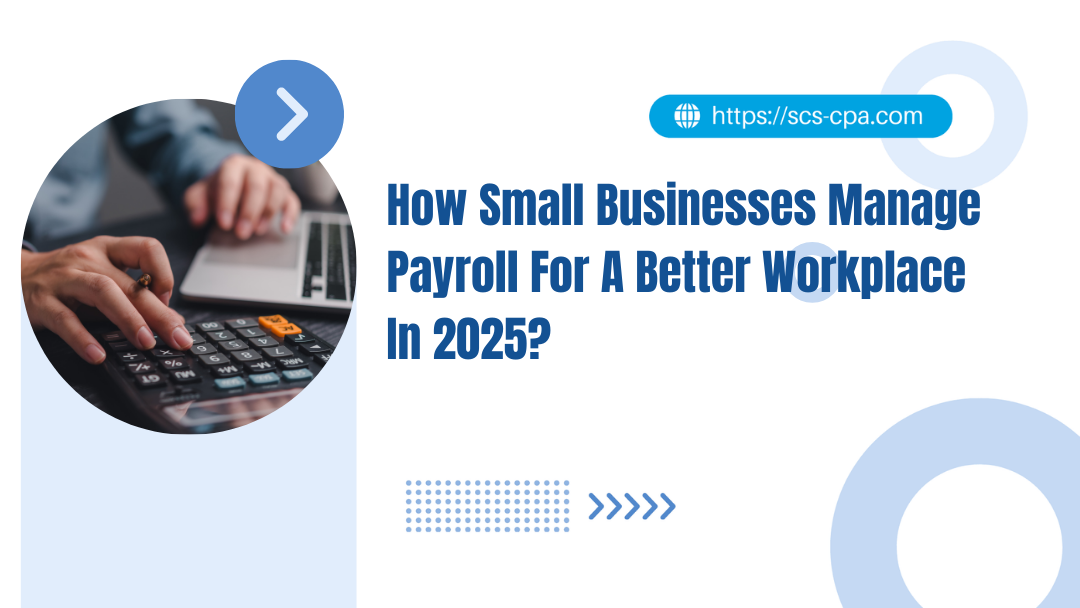
Payroll is both the company’s and employees’ bread and butter. It is a trust builder, a legal obligation, and a foundation of employee experience. When done right, it ensures team morale, compliance, and operational efficiency. When done wrong, it can cause a downward spiral of errors, stress, and penalties:
Error propagation → manual rework → penalty risks → employee mistrust → morale dip → resource drain
In this guide, we outline how small businesses in Singapore can set up and manage payroll correctly. Then, we will uncover ways to enhance employee experience through good payroll practices.
7 Steps To Manage Payroll For Small Businesses

1. Incorporate the Business
Before hiring or paying anyone, you must register your company with ACRA and open a dedicated corporate bank account. With those, you will gain legal standing and access to statutory platforms, including CPF and IRAS.
2. Choose and Install Payroll Software
Select software that supports Singapore’s statutory obligations, including:
- CPF contributions
- IRAS filing (Form IR8A, Appendix 8A/8B)
- Skills Development Levy (SDL)
- Foreign Worker Levy and Ethnic Fund Deductions
Moreover, cloud-based payroll solutions like HReasily offer various services to reduce bottlenecks. Among them are data security, integration with other platforms and employee self-service features.
3. Gather Employee Details and Payroll Data
To accurately manage payroll, companies need their:
- Employee’s full name, NRIC/FIN, bank details
- Work hours, overtime, claims
- Bonuses, allowances, CPF classification
Doing so will ensure accurate processing and support audits or checks.
💡Reminder: Make sure the provider you engage has security certifications like ISO 27001 and SOC2. This extra step helps you safely organise information, store sensitive data, and manage payroll.
4. Set Pay Categories, Deductions and Allowances
An employee’s net pay consists of more than the basic salary. It also comprises allowances (e.g. transport, meal, shift), deductions (e.g. no-pay leave, CPF, taxes), bonuses and incentives.
When setting up, you must also align with the Ministry of Manpower (MOM) and CPF Board requirements.
5. Payroll Calculation and Disbursement
Calculate employees’ net pay after all deductions and contributions. Pay salaries at least monthly and no later than seven days after the pay period ends. Provide itemised payslips, either paper or digital, for transparency.
After implementing (and testing) your new system, you are set to calculate your employees’ pay. Begin by subtracting all the deductions and contributions from the net pay. Then, you can schedule monthly salary disbursement and generate itemised payslips.
6. Follow Statutory Submissions
Monthly and yearly filings must be timely. Late or inaccurate filings may trigger penalties from CPF or IRAS. If you are managing payroll, ensure you follow these deadlines closely:
| Obligation | Frequency | Deadline | Possible Late Penalties |
| CPF Contributions SDL Contributions |
Monthly | By the 14th of the next month | CPF: 15%, SDL: 10% |
| IRAS Form IR8A & Appendices | Annually | By March 1st of the following year |
For new contributors, you can also refer to CPF’s guideline on Mistakes by Employers when Determining CPF Contributions to reduce your errors during the submission.
7. Maintain Payroll Documentation
Singapore requires businesses to retain payroll records for at least 2 years. Among them are employee records, salary records and correspondence with employees.
Good record-keeping prepares you for audits, spot checks, and resolving employee or regulatory queries promptly.
Why The Way You Manage Payroll Matters

Payroll touches every phase of the employee lifecycle, from onboarding to bonus payouts and exit processes. When you correctly manage payroll, it builds foundational trust and a better workforce, like
- employee morale
- employee engagement
- employee retention
Moreover, businesses send a clear message: We value and care for you.
5 Practices For Enhancing The Employee Experience

1. Transparency and Communication
Provide clear, accessible payslips with detailed breakdowns. You can use onboarding guides, explainer videos, and FAQs to clarify deductions and payroll processes.
Next, automate routine queries with chatbots or self-help portals. Your payroll systems can include
- Document management to retrieve payslips and submit claims
- Employee Profile to update personal info
- Attendance tracking and HR apply for leaves
- Chatbots or help desks for troubleshooting issues and inquiries
These features reduce admin burden and empower employees.
[More readings: https://scs-cpa.com/payroll-services-features-for-your-business/]
2. Timely, Accurate Payments
Always meet or beat payroll deadlines and double-check before submitting. One of your responsibilities is to ensure salaries reflect correct overtime, bonuses, and leave entitlements. If you can consistently do so, your employees will feel respected and valued.
To avoid errors and under/overpayments, you can automate validation for multi-layer approvals.
3. Integration with HR and Attendance Systems
One way to improve employee experience is to link payroll systems with HR platforms and time tracking systems. With these systems, employees will enjoy:
- Better data accuracy
- Fewer duplicate entries
- Quicker payroll cycles
- Automatic updates on work hours, leave, and claims
4. Regular Feedback and Monitoring
To track changes effectively, consider conducting brief micro-surveys or quarterly feedback sessions. Important metrics to note are payroll errors, payslip disagreements, and your support team’s response time.
In this step, focus on continuous improvement rather than perfection. Also, don’t hesitate to try new ideas and adjust as needed. You might find a solution that works better for you.
5. Regulatory Compliance
Finally, stay updated on changes in CPF rates, IRAS rules, and MOM guidelines. When you get an update, document it and explain the changes to employees during team meetings. You can also assign a contact person (HR or finance) and create a resource hub for policy questions.
Ready To Manage Payroll Better?

A good, tech-enabled payroll system that follows Singapore’s rules is just the beginning. Successful businesses use payroll management to build transparency, trust, and empower their workforce.
Furthermore, having the right payroll system can improve workplace culture. They do this by combining good optimal processes with active employee engagement.
Need more guidance and information? You can engage with experienced providers like Singapore Corporate Services (SCS), or governmental help desks like ask.gov.sg.
Have A Question?
HAVE A QUESTION?
Connect with us for a free
consultation to begin your
business transformation.
Disclaimer: The information provided in this article is intended for general guidance only and reflects regulations as of the publication date. Given that compliance requirements, processes, and fees may change over time, readers are advised to consult official sources such as ACRA for the most up-to-date information or seek professional guidance from our team.
How to Change Your Company Name in Singapore
A company's name can significantly shape its identity, yet there are times when a change becomes...
Is Singapore a Tax Haven? A Comprehensive Analysis
Is Singapore really a tax haven, or is it simply capitalising on tax policies that spur economic...
Fiscal Year vs Financial Year: Definitions and Implications
Is there a difference between a fiscal year and a financial year? While they both refer to the...



